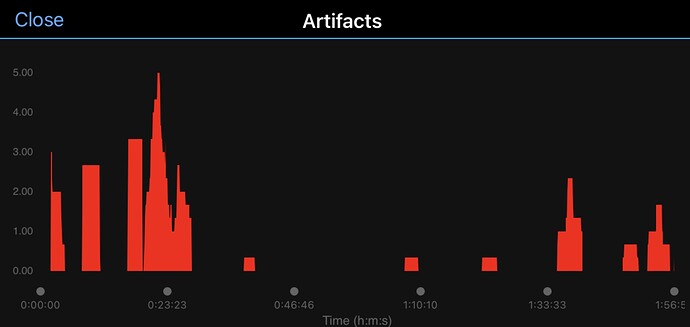Thank you @Inigo_Tolosa , I have tried and it works perfectly (changing to a profile without IQ, and returning). I will do this next time instead of restarting device!

Yes! You are right, that is the way to reset HRV graph field 
Is it possible to add the Edge Explore 2 to the list of supported devices?
I will check it. Probably it’s possible, but it will need some work to adapt layout to its screen size.
I will add it in the next update if possible
Already added support for both Explore and Explore2. Send me a PM to get some tips on using the app in this device.
Saturday, I did 2h30m Test Outdoors little bit lower than the candidate intensity [150bpm]… (previously I rode 40min crossing the city)
Data for the whole test: I have tried to be the more steady state possible!!! 
Now the data splitted in 5 segments (almost 30min each one):
Can we get some conclusions about those results? I mean, to confirm if the first threshold is close enought?
I have eaten something and then after 1 hour I did it again but this time less than 2 hours at the same intensity…
It is possible that the first threshold is near those intensities and the pulse may be possible to be at 150 beats.
I have not made up my mind yet on what to expect and the extent to dynamically monitor alpha 1 vs heart rate during rides, however we should take into account that heart rate@vt1, power @vt1 might change dramatically even after 2 hours riding @vt1 (the latter determined under non fatigued conditions).
I believe many of you have a misconstrued concept of the use of Alpha -1 and RR, controlling Alpha-1 live does not seem like the best option, all of this goes beyond threshold estimation. Thresholds change is well known for a long time, within the same session, from one day to another, etc… any model or metric should be very important to know its limitations and thus be able to control it as best as possible.
Thank you @Luisma_Gallego_Soy_P , if is possible I am going to test it with lactate this week… I’ll Let you know the results if so…
Out for two hours endurance today. First time using. I see quite a few artefacts. The strap is Polar H10 and currently connection is Ant+. Does BLE give fewer artefacts and worth changing or no difference?
Edge Explore 2
You will see quite similar artifacts regardless the communication protocol you select. Artifacts will be reduced if you assure good contact condition with the strap. Try to tighten ot loosen the strap and avoid movements that could make it slip or displace.
In case that artifacts correspond to quite low HR values, you can also increase a bit the limit between rest and exercise condition for artifacts detection in the app settings
It would be perfect if you could record with IQ too, if possible. I usually do it this way too
Yes for sure @Luisma_Gallego_Soy_P, I do this test at my home… But one doubt:
I don’t have any assistant for the test, so what I do is to pause the ramp test at every 6min for each step in order to take the lactate sample (kind of 20-30 secs not pedaling), and then after this return to pedals and continue with next step, 6 minutes is long enough for lactate to stabilize…
It is ok to do it this way for RR/a1? I think if the little pause does not affect lactate readings, it should not affect RR/a1 reading either right?
Yes, it does affect. Think that when you stop, your respiratory rate will decrease and your DFA will increase, but if you want to try it and see what happens
Ouch, I was thinking that 6 minutes will return the RR/a1 to a condition similar if don’t pause… 
If I can get some help, I’ll do without interrupt, if not, I’ll try this time with the little pause and check how RR/a1 behaves…
Thanks!
I just noticed during a ride today that if the app doesn’t start up properly (and the IQ symbol appears), it can cause the Garmin user to crash and restart itself several times. No idea why this happened, since the app was working before, but maybe some sort of hidden settings change took place.
I second that. Regrettably the misconception is enforced by the fact that people can look at those values while riding. Also some made it crystal clear that it is possible to detect thresholds even without test protocols, e.g., see here DFA alpha 1 HRV based (an)aerobic threshold estimation
Same thing happens to me occasionally. I also use Xert IQ fields and it happens occasionally when I’m using them. I think it’s mainly a problem with the Garmin as I seem to get far more problems after one of their updates. I believe there isn’t much computing power in the Garmin and some of these apps push it’s limits a bit.
On another note I’ve seen an increase in battery usage using this app which I’m assuming is linked to the processing required on the app. Having said all this I think the app is brilliant.
Well,
People has made clear that this “ DFA alpha 1 will cross 0.75 and later 0.5 at some point during an activity if the intensity is high enough.” is no longer valid so be careful with AIEndurance.



